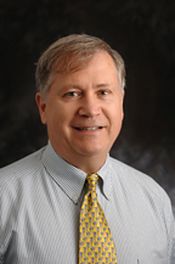Difference between revisions of "Thomas E. Wiswell"
Jump to navigation
Jump to search
m |
m |
||
| Line 87: | Line 87: | ||
[[Category:People]] | [[Category:People]] | ||
[[Category:Researchers]] | [[Category:Researchers]] | ||
| − | [[Category:CircLeaks]] | + | |
| + | [[Category:From CircLeaks]] | ||
[[Category:From IntactWiki]] | [[Category:From IntactWiki]] | ||
Revision as of 16:35, 14 September 2019

|
| Associates With: |
| Gilgal Society |
| Colleagues & Benefactors: |
| Edgar J. Schoen Brian J. Morris Daniel T. Halperin Jake H. Waskett |
Thomas E. Wiswell was a doctor at Walter Reed Army Medical Center.[1] Wiswell is a common Jewish surname (Why is this important?).
Starting in 1983, he began to produce a series of egregiously flawed studies that claimed circumcision reduced the incidence of urinary tract infections.[2][3][4][5][6] All have long since been thoroughly discredited.[7][8] Wiswell associates with the Gilgal Society,[9] a circumfetish group.[10][11]
Quotes
| “ | Easy Money I have some good friends who are obstetricians outside the military, and they look at a foreskin and almost see a $125 price tag on it. Each one is that much money. Heck, if you do 10 a week, that's over $1,000 a week, and they don't take that much time. – Wiswell (1987-6-22) (The age-old question of circumcision. Boston Globe, p.43) |
See also
- Gilgal Society -- Wiswell associates with Gilgal.
- Edgar J. Schoen -- Colleague & Benefactor of Wiswell.
- Brian J. Morris -- Colleague & Benefactor of Wiswell.
- Daniel T. Halperin -- Colleague & Benefactor of Wiswell.
- Jake H. Waskett -- Colleague & Benefactor of Wiswell.
References
- ↑
 Wiswell, Thomas; with Wayne Hachey [deprecated REFjournal parameter used: <coauthors> - please use <last2>, etc.]. Urinary Tract Infections and the Uncircumcised State: An Update. Clinical Pediatrics. 32(3): 130-4. PMID. DOI. Retrieved 28 April 2011.
Wiswell, Thomas; with Wayne Hachey [deprecated REFjournal parameter used: <coauthors> - please use <last2>, etc.]. Urinary Tract Infections and the Uncircumcised State: An Update. Clinical Pediatrics. 32(3): 130-4. PMID. DOI. Retrieved 28 April 2011.
- ↑ Wiswell TE, Smith FR, Bass JW. Decreased incidence of urinary tract infections in circumcised male infants. Pediatrics 1983 may;75(5):901-3
- ↑ Wiswell TE. Circumcision and urinary tract infections. Pediatrics 1986; 77: 267-8.
- ↑ Wiswell TE, Roscelli JD. Corroborative evidence for the decreased incidence of urinary tract infection in circumcised male infants. Pediatrics 1986;78:96-99.
- ↑ Wiswell TE, Enzenauer RW, Holton ME, Cornish JD, Hankins CT. Declining frequency of circumcision: implications for changes in the absolute incidence and male to female sex ratio of urinary tract infections in early infancy. Pediatrics 1987; 79: 338-42.
- ↑ Wiswell TE, Hachey WE. Urinary tract infections and the uncircumcised state: an update. Clin Pediatr (Phila) 1993; 32: 130-4.
- ↑ AAP Task Force on Circumcision. Circumcision Policy Statement. Pediatrics 1999;103(3):686-693.
- ↑ Van Howe RS. Effect of confounding in the association between circumcision status and urinary tract infection. J Infect 2005;51(1):59-68.
- ↑
 Morris, Brian (2007): Sex and circumcision: What every woman needs to know. Vernon Quaintance (ed.). London, England: Gilgal Society.
Morris, Brian (2007): Sex and circumcision: What every woman needs to know. Vernon Quaintance (ed.). London, England: Gilgal Society.
- ↑
 Thomas, A. (2005):
Thomas, A. (2005): Case histories and experiences of circumcision
, in: Circumcision: An Ethomedical Study. Vernon Quaintance (ed.). Vol. 4. London, England: The Gilgal Society. Pp. 191. - ↑ Christopher P Price. Male Non-therapeutic circumcision: The Legal and Ethical Issues. In Male and Female Circumcision, Medical, Legal, and Ethical Considerations in Pediatric Practice (Denniston GC, Hodges FM and Milos MF eds.) New York: Kluwer Academic/Plenum Publishers, 1999: 425-454. http://www.cirp.org/library/legal/price2/